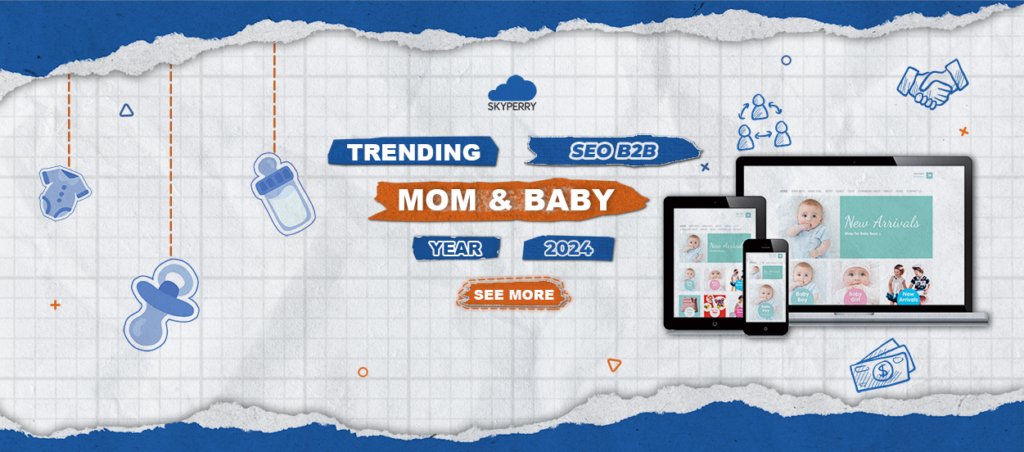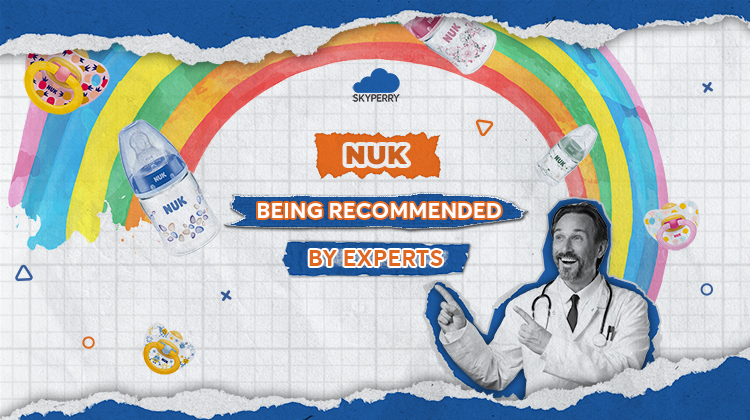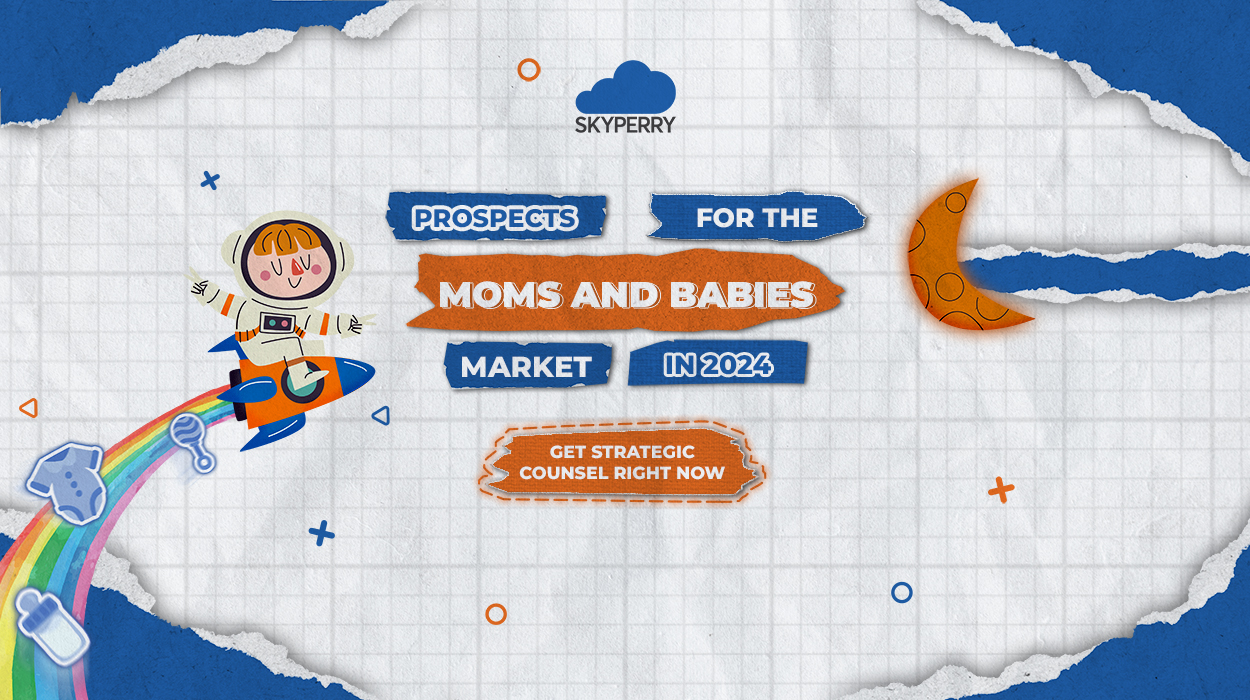Using a successful B2B S.E.O. strategy is essential for companies in the mother and baby sector to succeed in a world of unrelenting competition and ever-changing business conditions. The crucial elements listed below are what marketers in this field must ignore when developing an SEO strategy for the mother and infant market in 2024.

Understanding the Context and Needs of the Target Audience
The first step to success in B2B S.E.O. strategy is having a thorough awareness of the demands, context, and difficulties that moms and babies confront. In order to provide content that is truly beneficial and helpful, it is imperative that you conduct a thorough analysis of the keywords and phrases that mothers frequently use. As many as 72 percent of buyers research products or services online before making a purchase, according to HubSpot surveys. Additionally, according to research from Think with Google, 50% of consumers frequently include specific terms in their searches, including “best milk for baby” or “toys for newborns.”
Optimizing the Mobile Friendliness (UI)
Young moms are not alone in their habit of searching for information on their phones. It is vital to guarantee that mother-and-baby firms’ websites offer a flawless mobile experience. On mobile devices, websites should load quickly, be easy to read, and be intuitive.By 2023, mobile devices will account for more than 50% of all search traffic worldwide, according to Statista statistics. In 2016, Google formally adopted the “Mobile-first Indexing” paradigm. This is an important development in Google’s continuous quest to improve the user experience. Search engine rankings for mobile websites are prioritized in an effort to improve mobile friendliness and accommodate the usage patterns of younger mothers.
Creating Quality and Engaging Content
Creating informative and interesting content on maternity and pediatric healthcare not only helps B2B companies in the mother and baby industry establish great relationships with their target audience, but it also encourages interaction and positive sharing. In the context of B2B SEO, articles, videos, guidelines, and educational content are essential components.
91% of participating organizations, according to data from the Content Marketing Institute, assert that offering high-quality content benefits their clientele. Furthermore, publications with captivating graphics typically have up to 94% greater interaction rates than those without photographs, according to Social Media Today.
Building Quality Backlinks
Businesses in the mother-and-baby product category are positioned far better in search results when they have links from other reputable and relevant websites. Thus, firms might overtake their most competitive rivals by constructing high-quality backlinks through content sharing and working with reliable partners in the mother and baby sector.
Websites in the top 3 search results frequently have over 90% of their connections coming from other websites, according to data from Backlinko. Furthermore, a business’s website’s potential ranking in search results can be raised by links from reliable and pertinent websites, claims Moz.
Utilizing Diverse Content Formats
B2B companies in the mother and infant sector should use a variety of content types, including photos, videos, blog entries, in-depth articles, infographics, and more, rather than just text. This strategy promotes multidirectional engagement in visually appealing formats and aids in drawing in the proper consumer base.
According to Cisco statistics, by 2024, videos will make up more than 82% of all internet traffic. Additionally, blog entries longer than 3,000 words had a 77% higher likelihood of being shared on social media, according to Impact research.
Enhancing User Experience (UX)
Google prioritizes the user experience in order to facilitate easier and more convenient website information access. Users will stay engaged on a marketing website for moms and babies longer if it is simple to use, has easily searchable content, loads quickly, and offers a seamless experience. This enhances user satisfaction, boosts conversion rates, and simplifies the purchasing process for customers, in addition to improving the website’s ranking in search results.
If a website takes too long to load, 53% of users will leave, according to Google. Furthermore, according to data from Kissmetrics, a website’s conversion rate might drop by 7% for every one-second delay in loading.
Tracking and Measuring Performance
Before organizing communications, use analytics tools to monitor the SEO campaign’s performance on a regular basis (every six months to the end of the year). Track metrics such as page surfing time, interaction frequency, and website traffic to modify the mother and infant product business plan over time.
Research from Search Engine Journal indicates that as many as 75% of companies frequently do not track their SEO effectiveness. Tools for monitoring website traffic, page viewing time, and bounce rates are frequently utilized, such as Google Analytics and Google Search Console.
Integrating SEO with Other Platforms
When developing a plan, incorporate SEO with paid advertising, email marketing, and social media. This enhances the target audience’s reach and involvement within the mother and baby industry.
A marketing campaign’s reach can be increased by up to 300% by integrating multichannel communication, according to data from the Content Marketing Institute.
Monitoring Trends and Updating to Latest Algorithm Changes
Moz claims that hundreds of times a year, Google modifies its algorithm, which has a big impact on page results. Mother and baby businesses must proactively update and modify their corresponding tactics in response to the ongoing shifts in search engines and trends.
Creating an Online Community
Creating an online community focused on mother and newborn care can have an interactive effect that encourages reviews and sharing from moms who are nursing. This has a favorable impact on the SEO strategy that companies for baby and mother items invest in.
Forrester Research figures show that user-generated material can be produced in large quantities and influence can be increased by online groups. Neil Patel continues by saying that user-generated content is frequently shared ten times more than original content.



